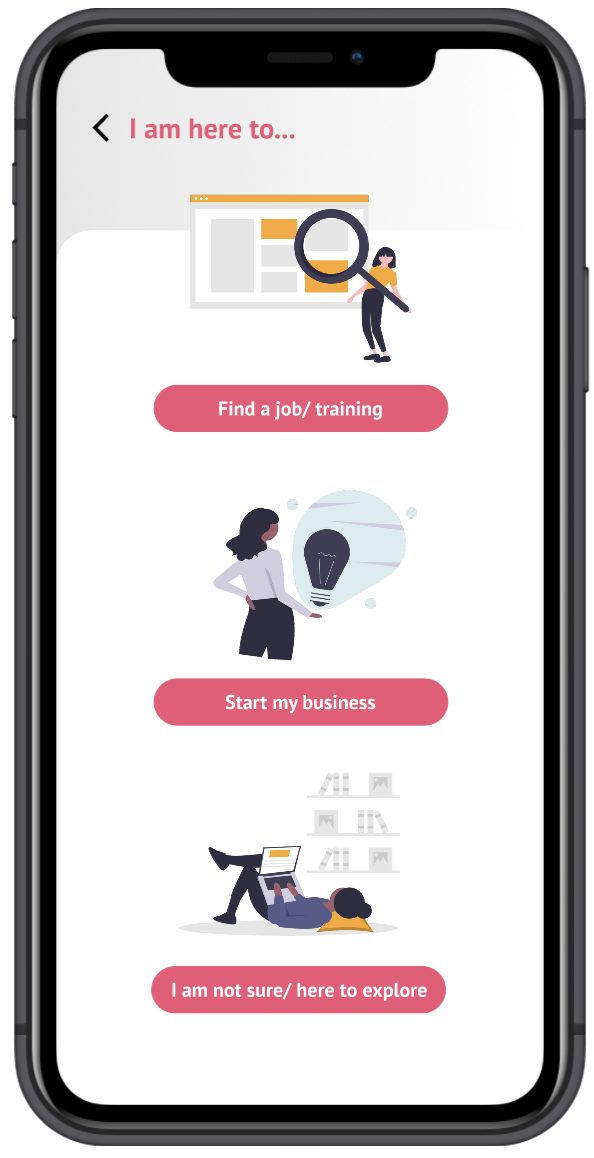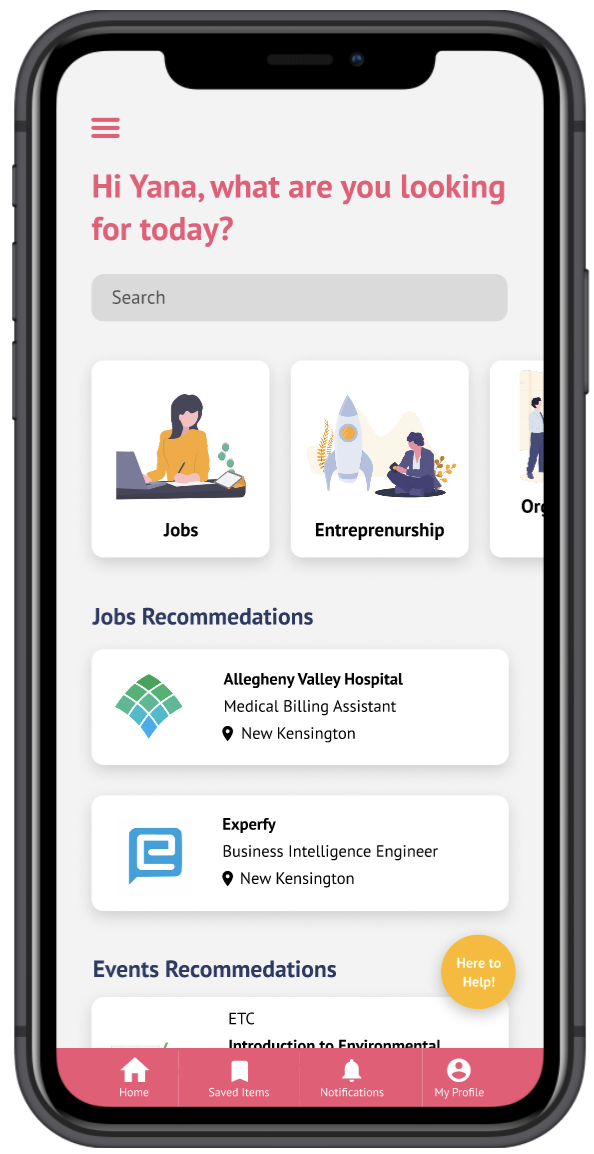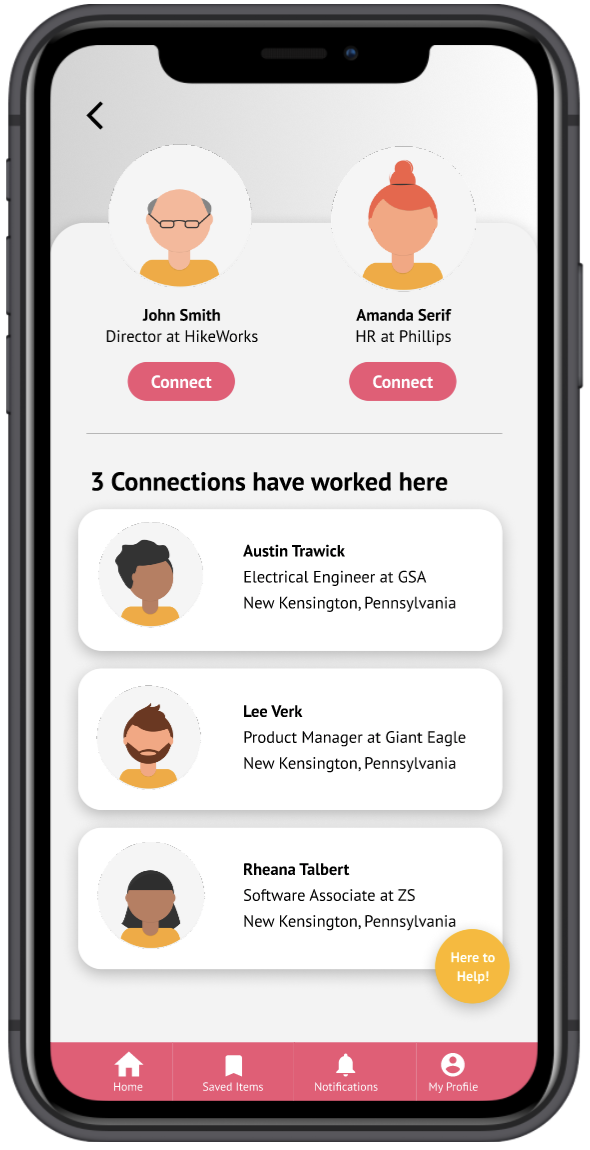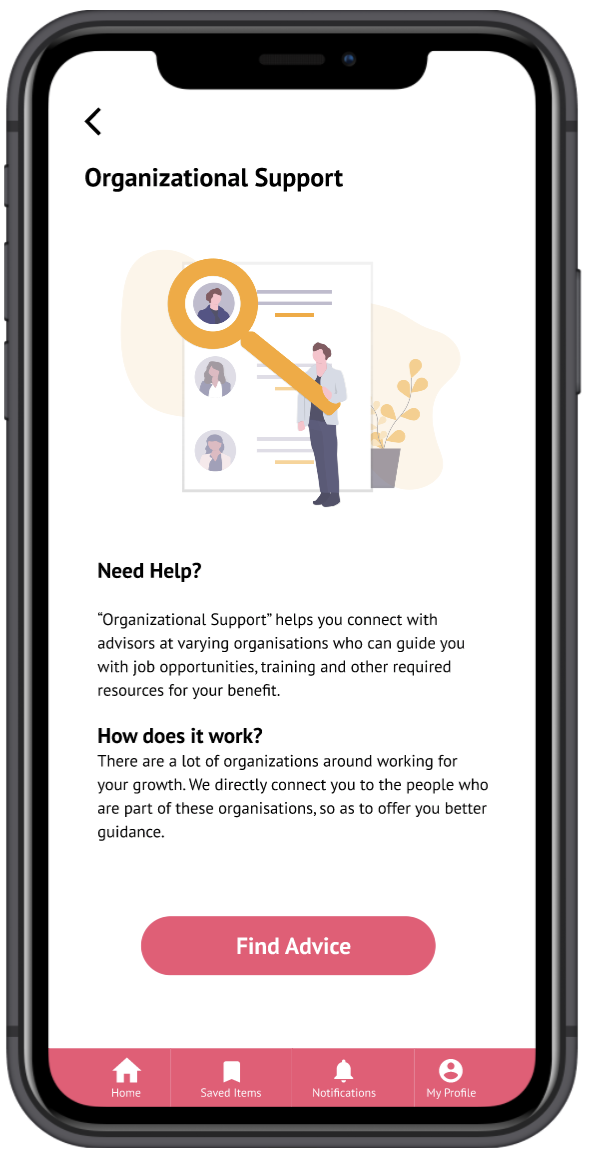
Forward Cities: ConAct
“ConAct” is a web-based application which connects scattered community resources in rust belt cities. It enables residents to be bridged to local resources, employment opportunities, and communityevents by offering an engaging experience.
- Deployed:Aug 1st, 2020
- Client:Forward Cities
- Role:User Researcher,
UX/UI Designer - Final Deliverable:iOS/Andriod Mobile App,
Web Based Landing Page
My Contribution
For the first three months of the product development phase, I wore multiple hats, serving as a user researcher, product manager, business analyst, and system architect.
In the second iteration phase, I made a significant pivot from building a web-based application and web-based back-office dashboard to creating an interactive and responsive, data-driven technology solution. This solution provides holistic support to a key stakeholder.
My accomplishments were,
Designing the holistic experience from concept to the final product for iOS/Android mobile, tablet, and web admin dashboard.
2. Delivering all design screens and assets within a limited timeframe.
3. Creating design pattern libraries for both mobile apps and web.
4. Achieving a usability testing average score of 80 with positive results, surpassing the initial proposal.
Solution
An interactive, one-stop information hub connecting residents with local organizations, assisting them in utilizing practical services to achieve their career goals.
1. Design Process
I really wanted to come up with an innovative solution for this project. In order to incorporate a more mature design process, I planned out to utilize different techniques of User-Centered Design Methods, Visual Thinking, Co-Creation, and Agile Methodology.
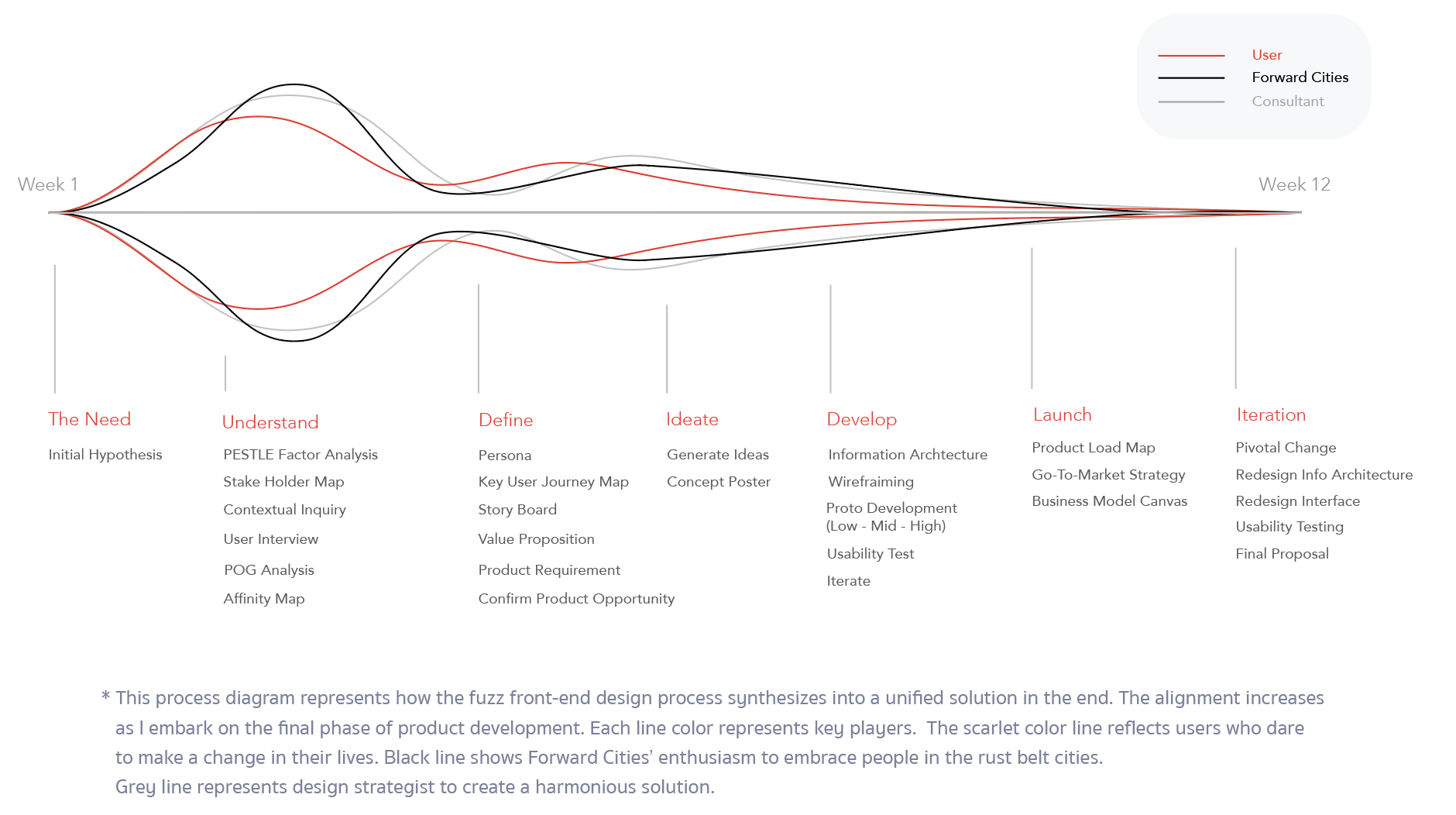
2. Understand: User Research
Secondary Research
For the most part, I did a literature review to investigate the current challenges the local residents face in one of the Rust Belt cities in Western Pennsylvania, New Kensington. In this phase, I was able to understand the overall problem space.

Primary Research
Based on the previous secondary research, I further conducted primary research on the target range: conducted survey, and fieldworks to pilot identified “communication channels,” “finding information,” and “jobs” as key opportunity areas.
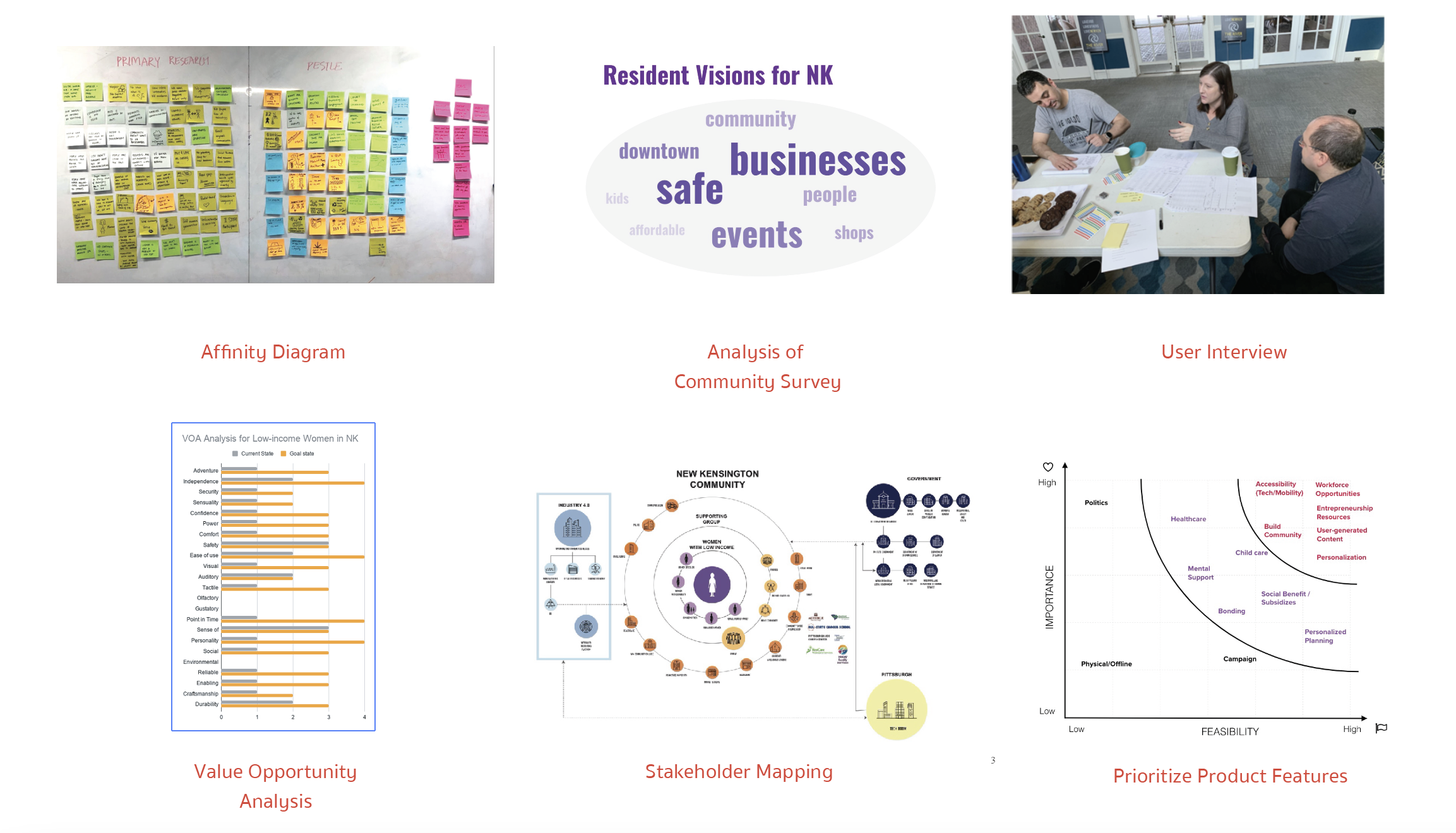
Research Insights
Who did I interview?
I interviewed ten people from various non-profit organizations who directly interact within rust belt cities, as well as single moms seeking new opportunities and resources to change their lives. Through in-person interviews and directed storytelling, I captured the core and subset activities in key opportunity areas. The primary research helped me understand the root causes that create barriers for residents accessing the resources they need in rust belt cities.

Who are primary users?
Female residents in New Kensington face significantly higher unemployment rates compared to their male counterparts, with the female unemployment rate nearly 12 times higher than the national average.

Single Mom
After analyzing the accumulated research data, it became evident that our primary target users should be single moms who are eager to enhance their income levels through participation in job training or by starting their own businesses. These individuals are willing to share their success stories with their peer groups and communities.
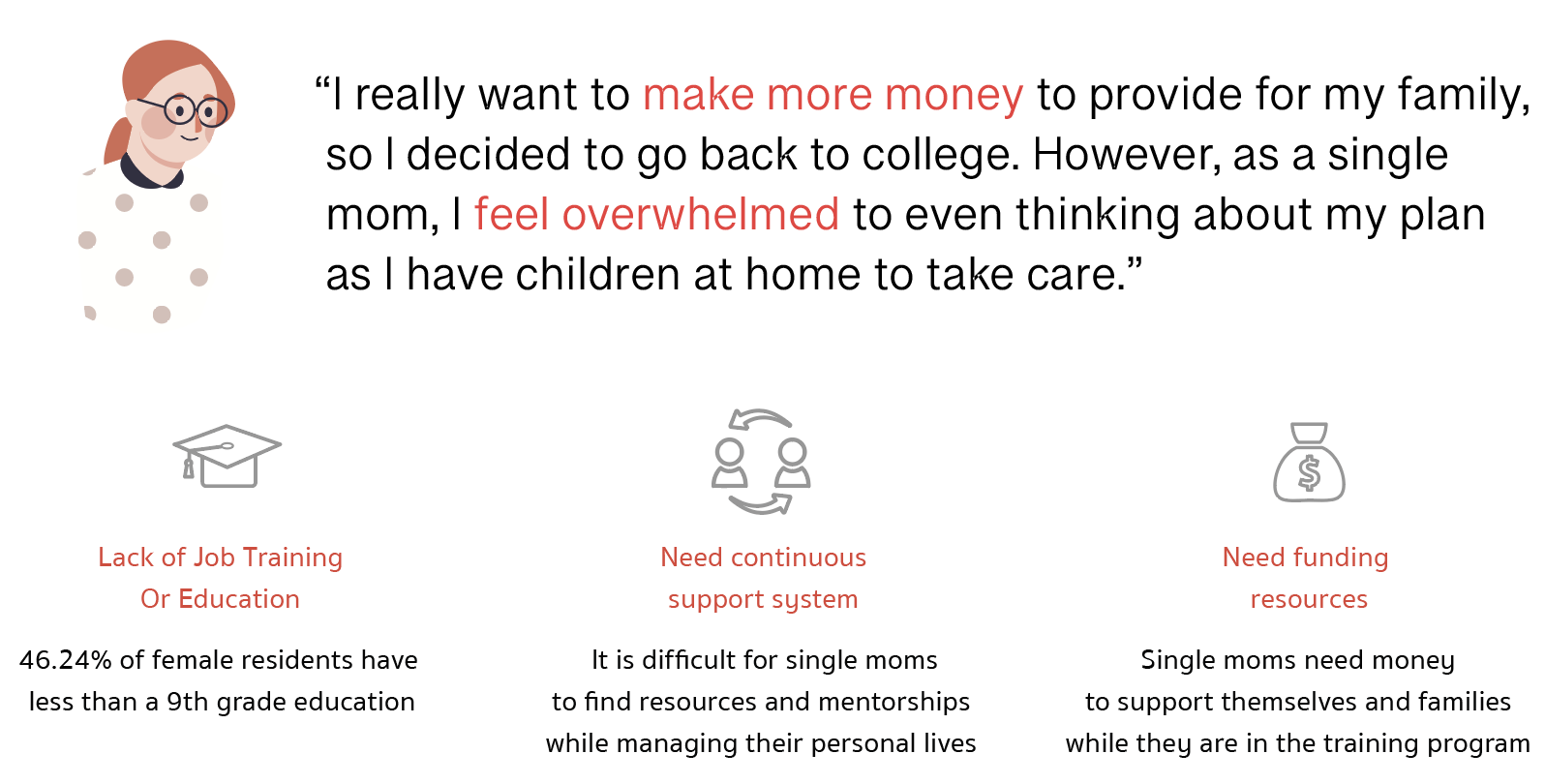
Ex-Convicts
Another group of target users includes individuals who have experienced the justice system. Census data reveals that in 2019, the crime rate in New Kensington, PA, was higher than that of 84.1% of cities in the U.S. Many social workers, education providers, and government officers emphasize the necessity of connecting ex-convicts with workforce readiness courses.
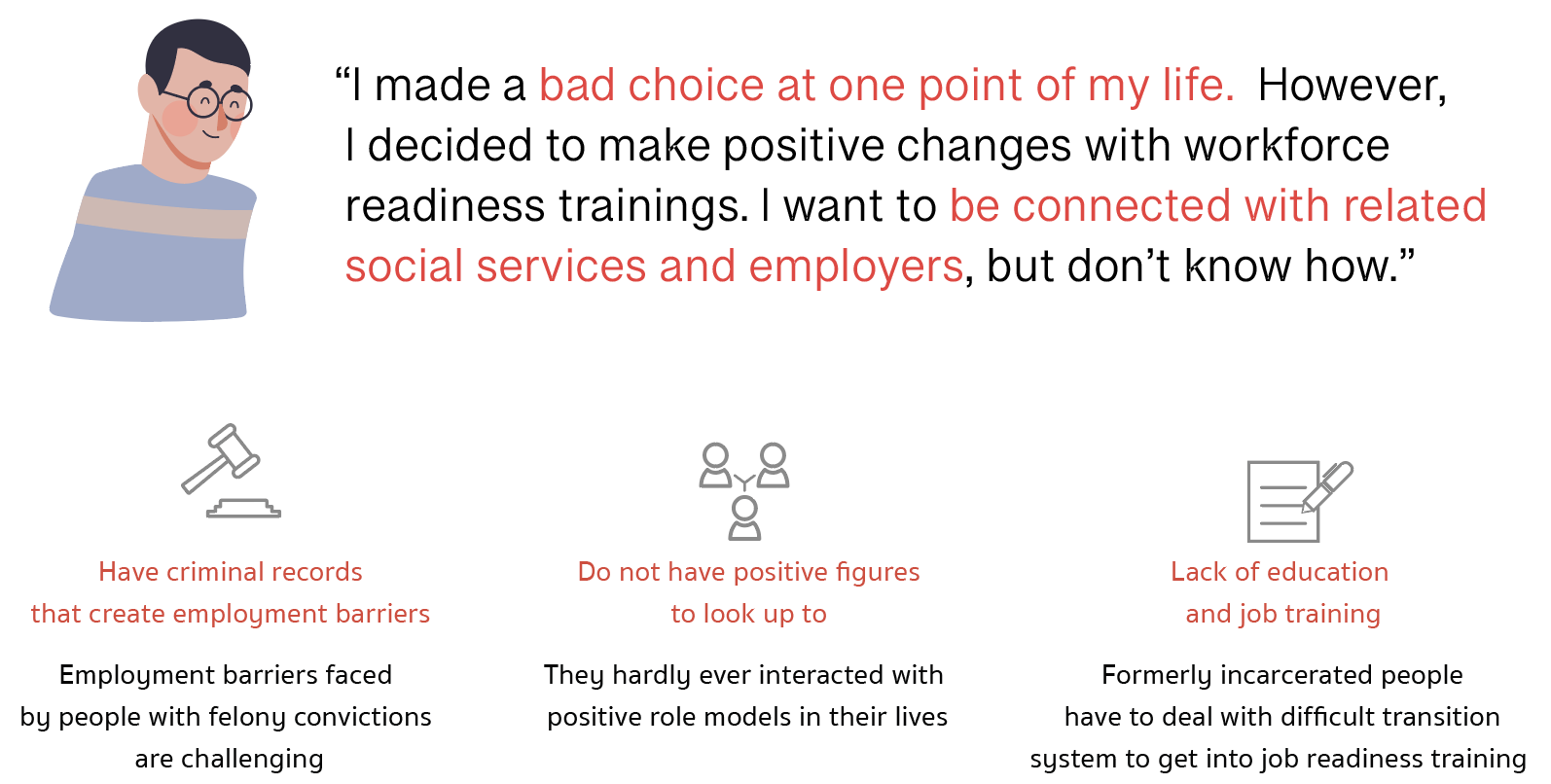
Product Requirement
As I gathered more insightful data and developed a better understanding of the problem space, I was able to draft the core Product Requirement Document (PRD). The four most important requirements are as follows:
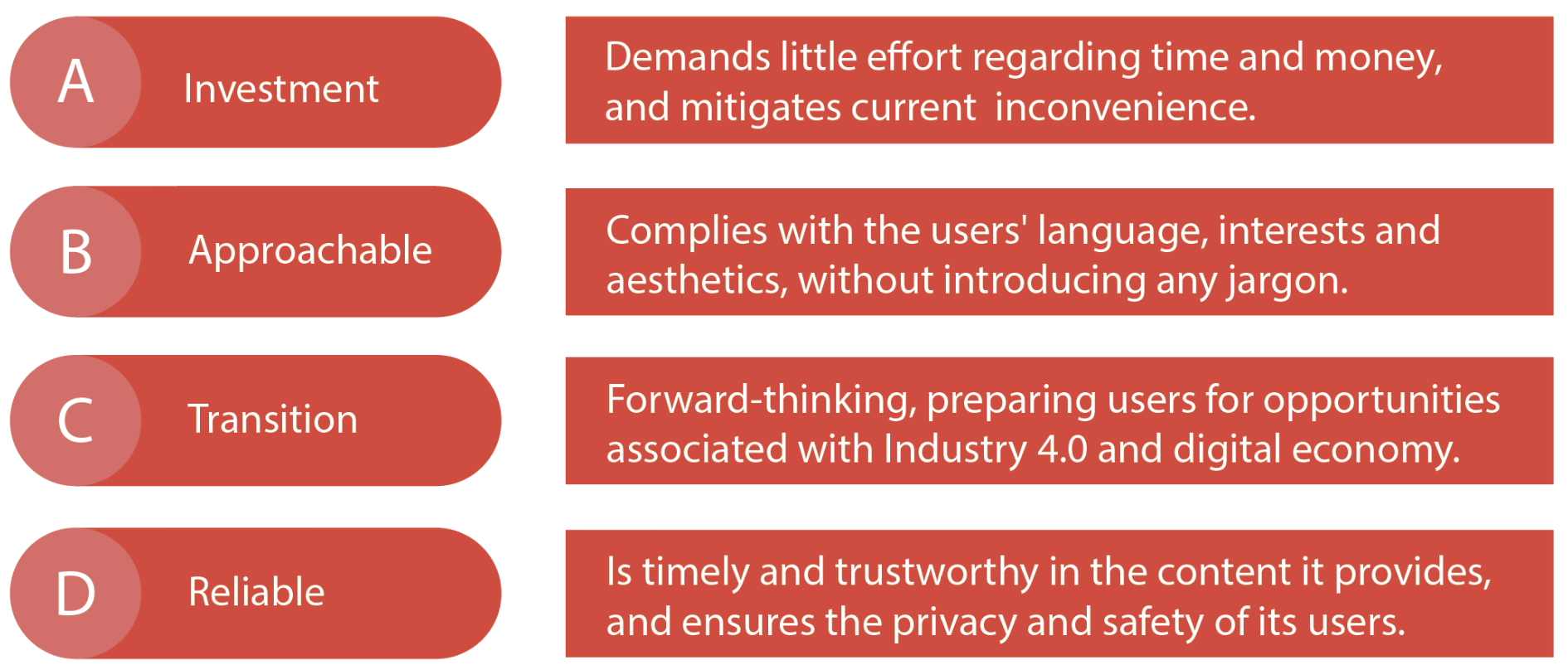
3. Define Product Development Opportunity
" How might we connect low-income residents in rust-belt cities to resources as a means to improve their income status while helping them to balance their personal lives through an intuitive technology platform? "
User Journey
I created a user journey map using the findings from research for further analysis and synthesis. I identified users' touchpoints and pain points at each step of the search process and discovered some opportunity gaps.
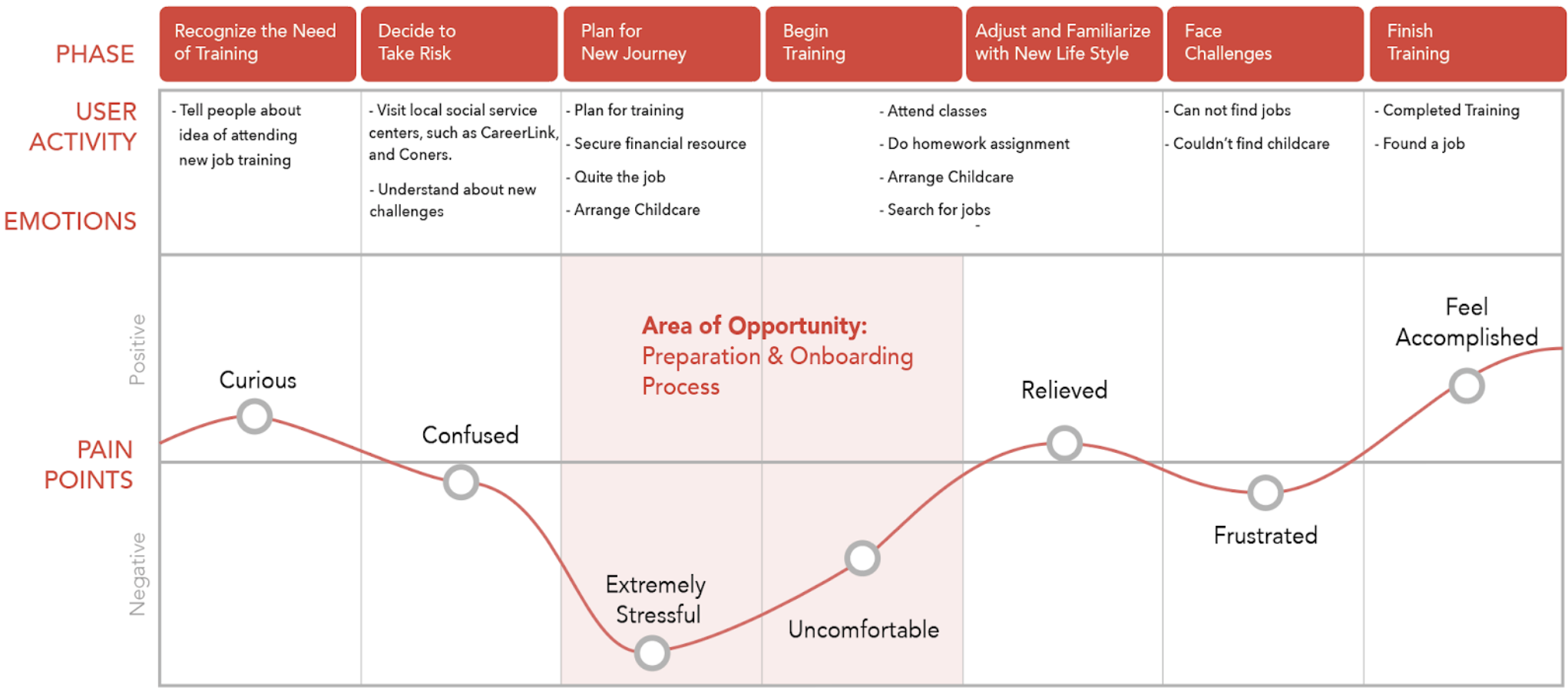
Design Objectives
I refined design objectives before moving into a ideation phase:
- Searching for career path and come up with realistic goals
- Encouraging user exploration with community events
- Matching resources with local organizations conveniently
- Sharing experiences in a safe community and support each other’s journey
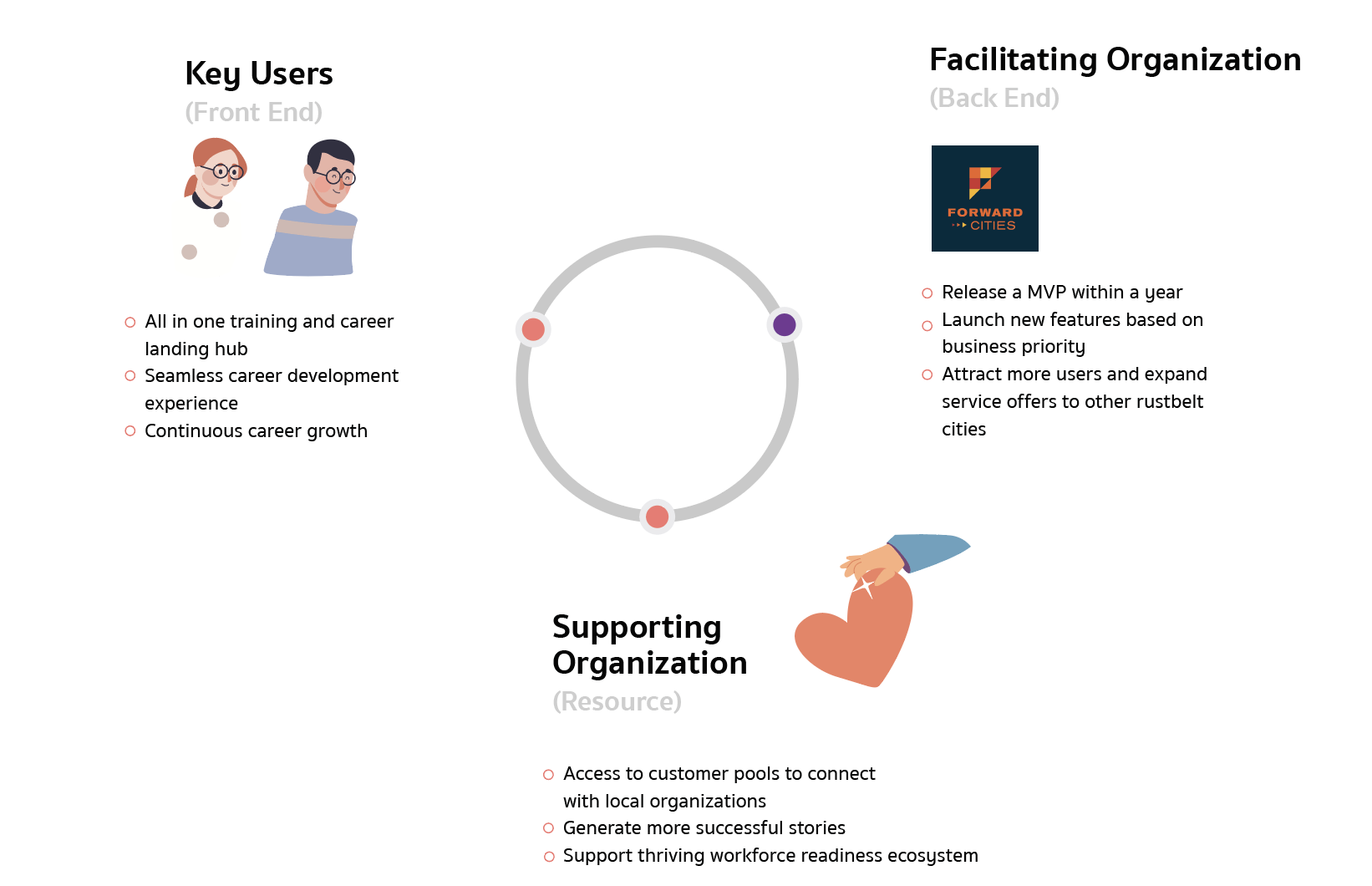
4. Ideation: Generate as many ideas as possible
As I gained a better understanding of users' needs and goals, I started brainstorming ideas with my design team to find an innovative solution for our target users.
Co-Design
In this process, I observed how key users understood necessary services or resources, identified strengths and weaknesses, set career goals, selected related job readiness training, found mentors or counselors, and applied for jobs. During this activity, I created a Venn diagram illustrating relationships among key players. This diagram will assist me in drawing an interactive user flow in the later phase of prototype development.
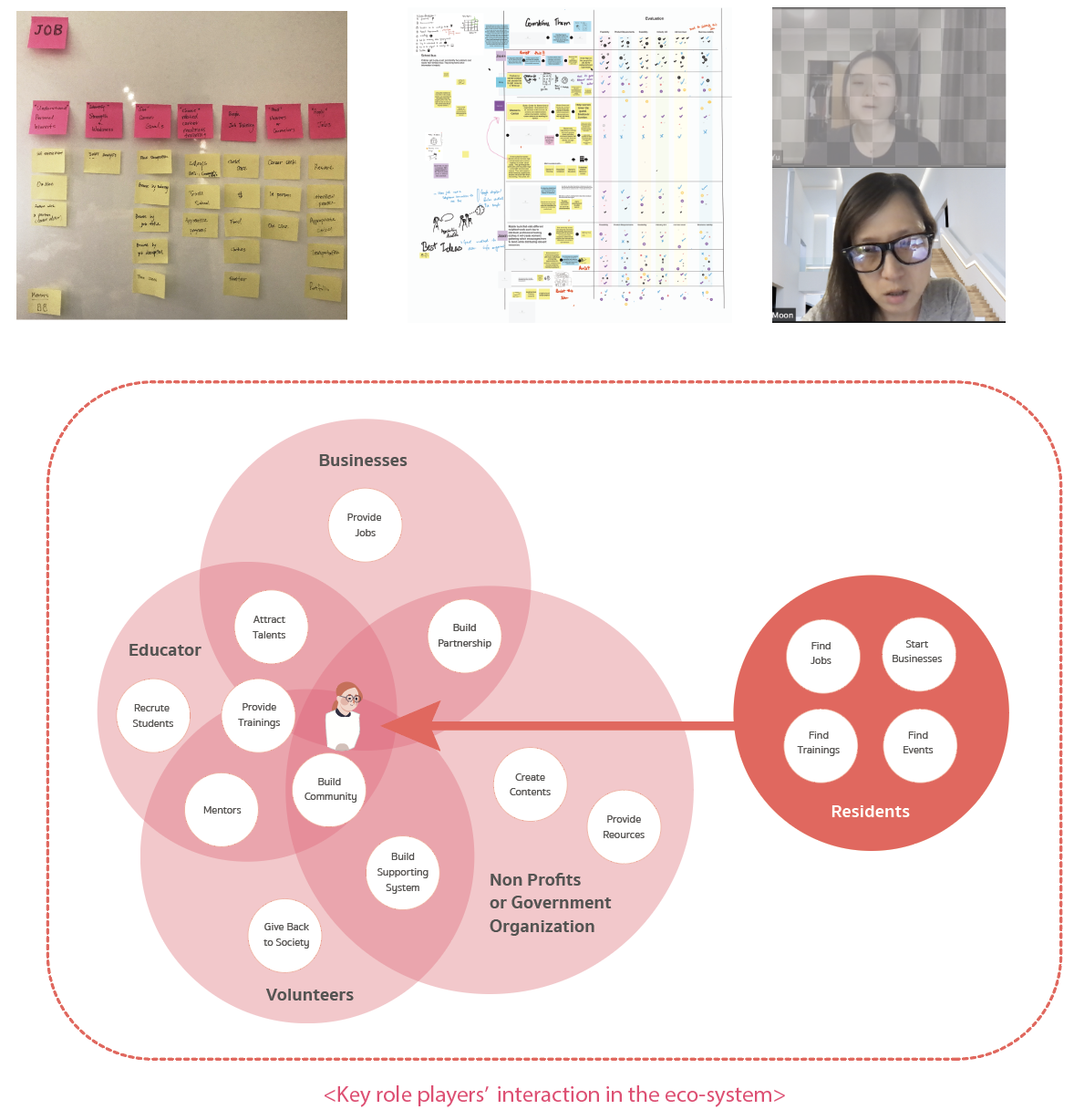
Based off the “story based co-design” outcome, I could better define the each user’s interactions.
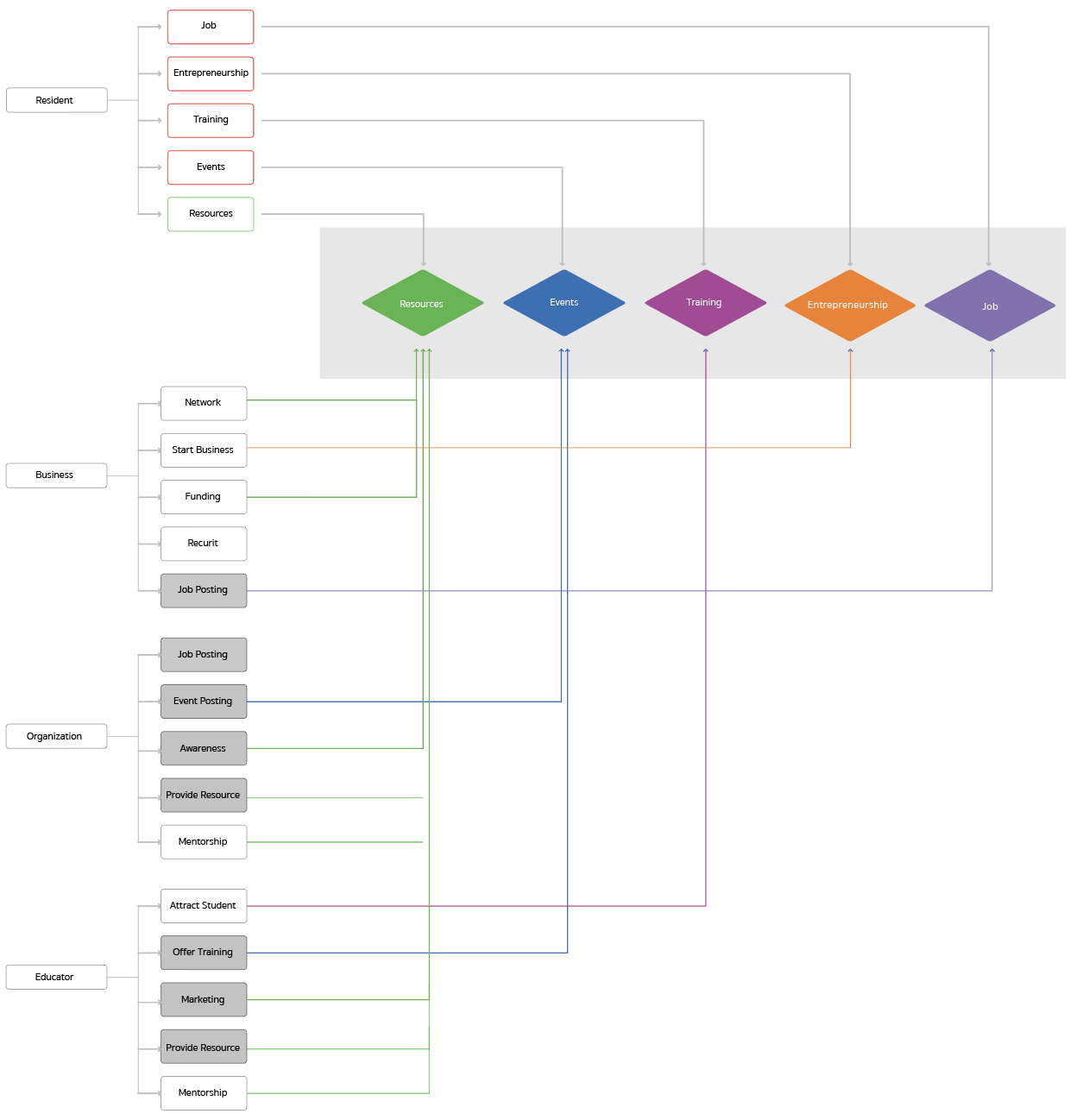
Product Roadmap & Successful Matrics
Based off the co-design, I could created a product roadmap that helps to prioritize development, investment, and importance to achieve user’s goals. I also added metrics to gauge the impact and effectiveness of such attributes on the application.
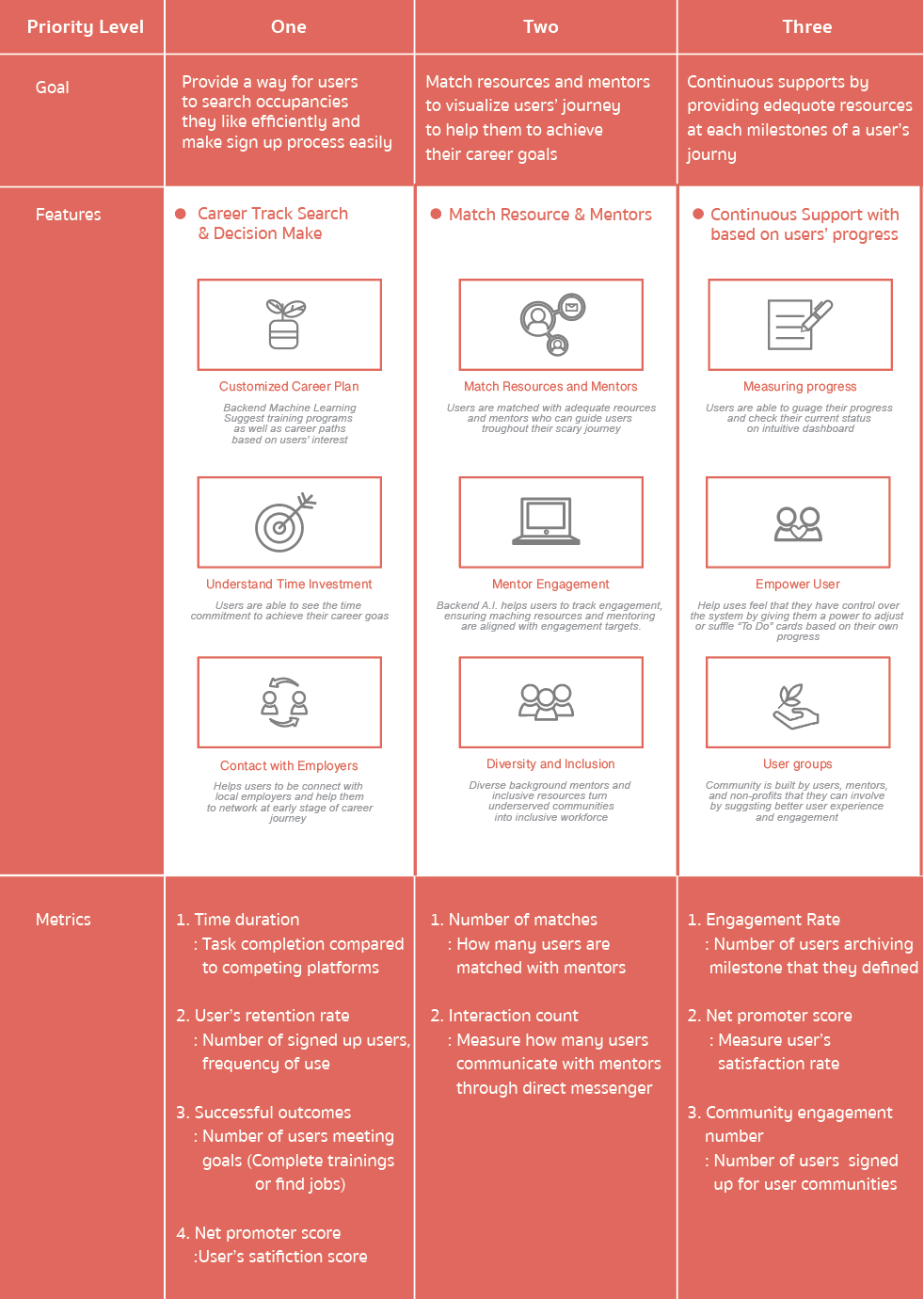
User Algorithm
At this stage, I did a quick research about possible technologies that can handle data collection and backend system management. After consult with a developer, an algorithmic decision based platform would help users to be connected with tailored resrouces while helping them to be matched with mentors and resources.
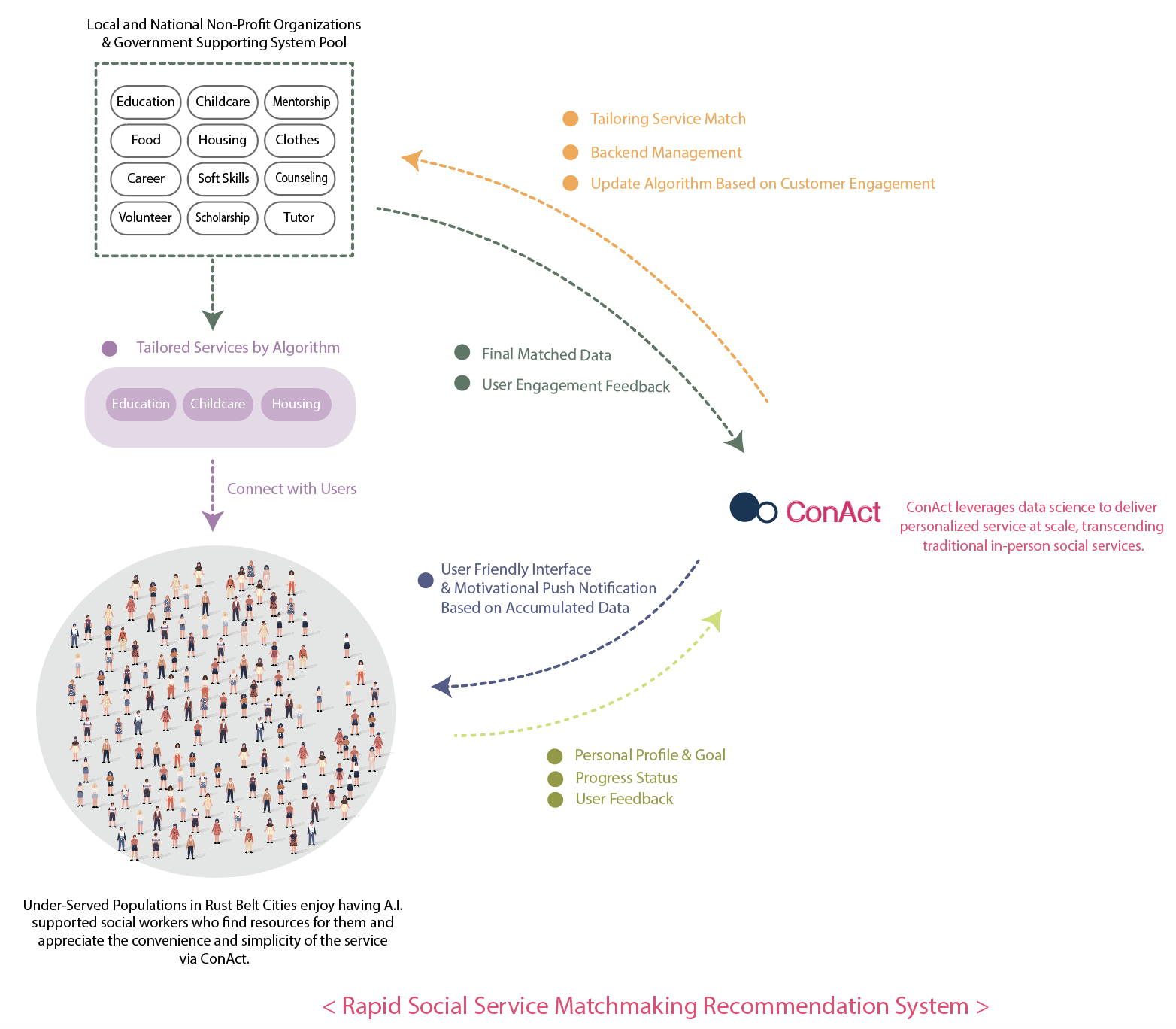
5. Prototyping
As I gained a better understanding of users’ needs and goals, I began to brainstorm ideas with my design team in order to find an innovative solution for our target users.
Information Architecture
Before beginning to create a wire-frame and low-fidelity prototype, I drew the information architecture to lay out my logic flow. The red boxes are new and innovative freatures that stand out from similar products in the market.
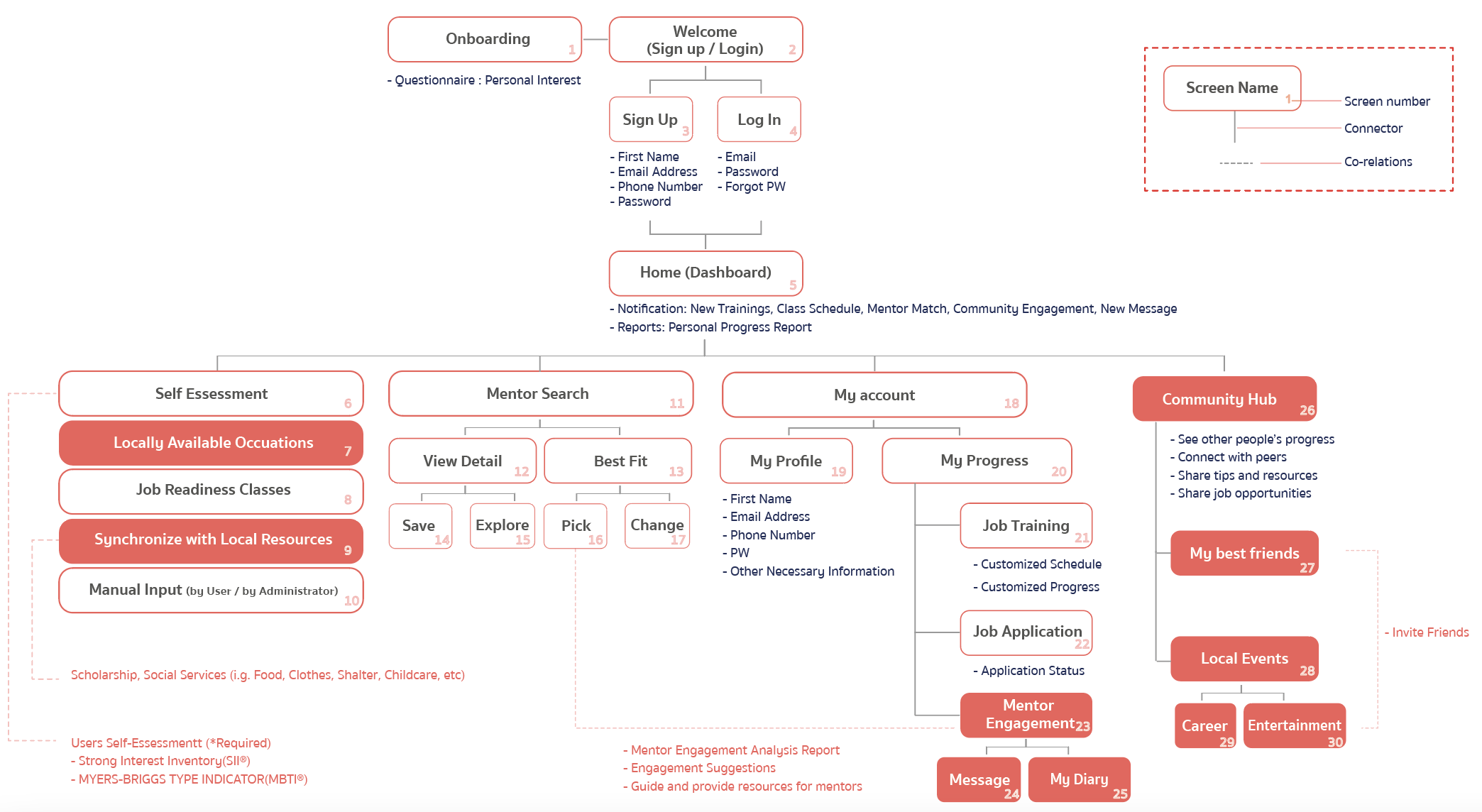
Flow Design
As building an information architecture helps me to visualize the product overview, I wanted to delve into designing user flows for the reason below:
- Create intuitive interface
- Help other people to understand how users would achieve their goals
- Use as a blue print to communicate with product management as well as development teams
This step was critical to design the end-to-end user experience, so I carefully designed each flow. These are two example out of ten(10) independent flows.
End to End Task Flow (Successful Case)

My Progress and Job List User Flow (Smooth Onboarding to Executing a Career Goal)
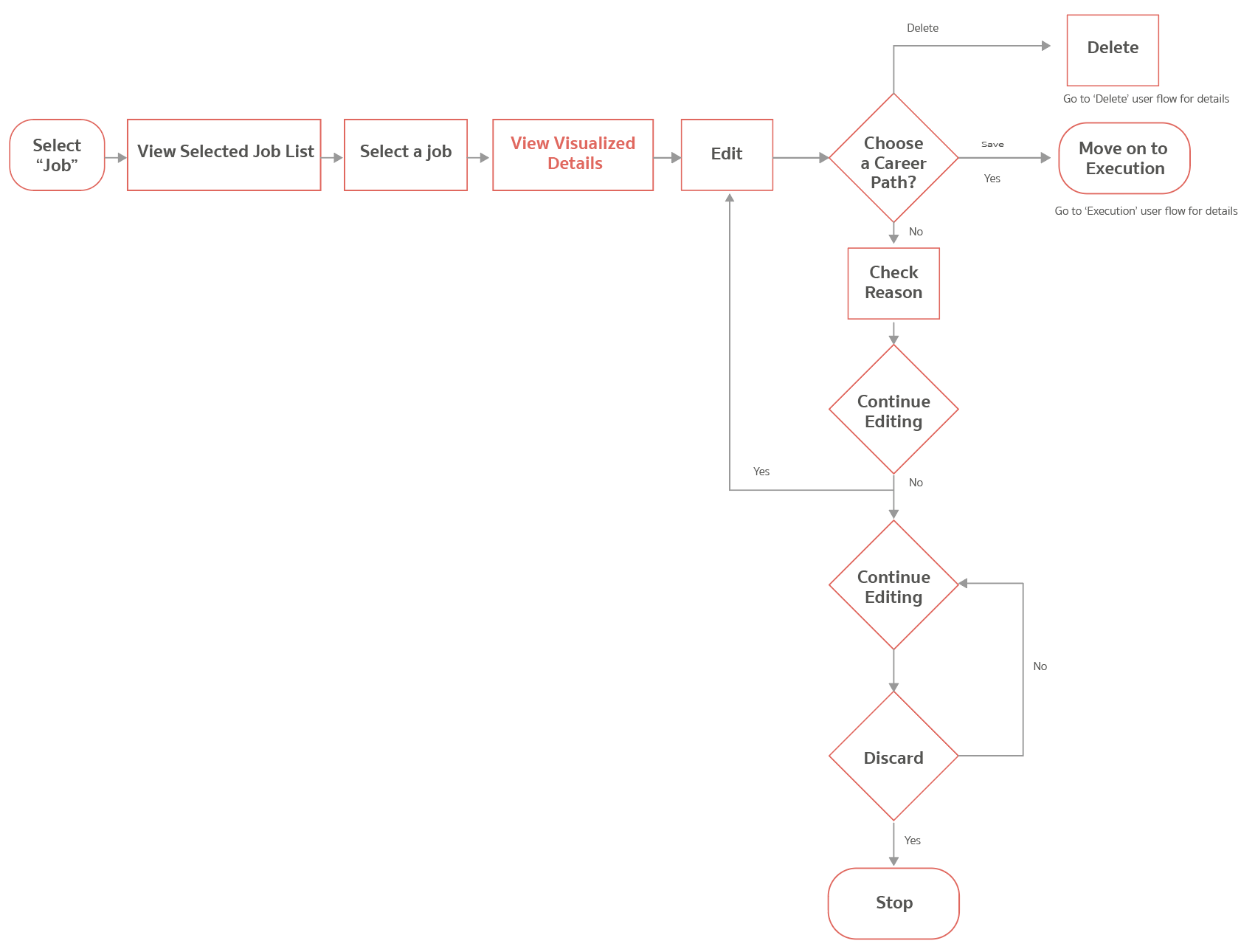
Wireframing
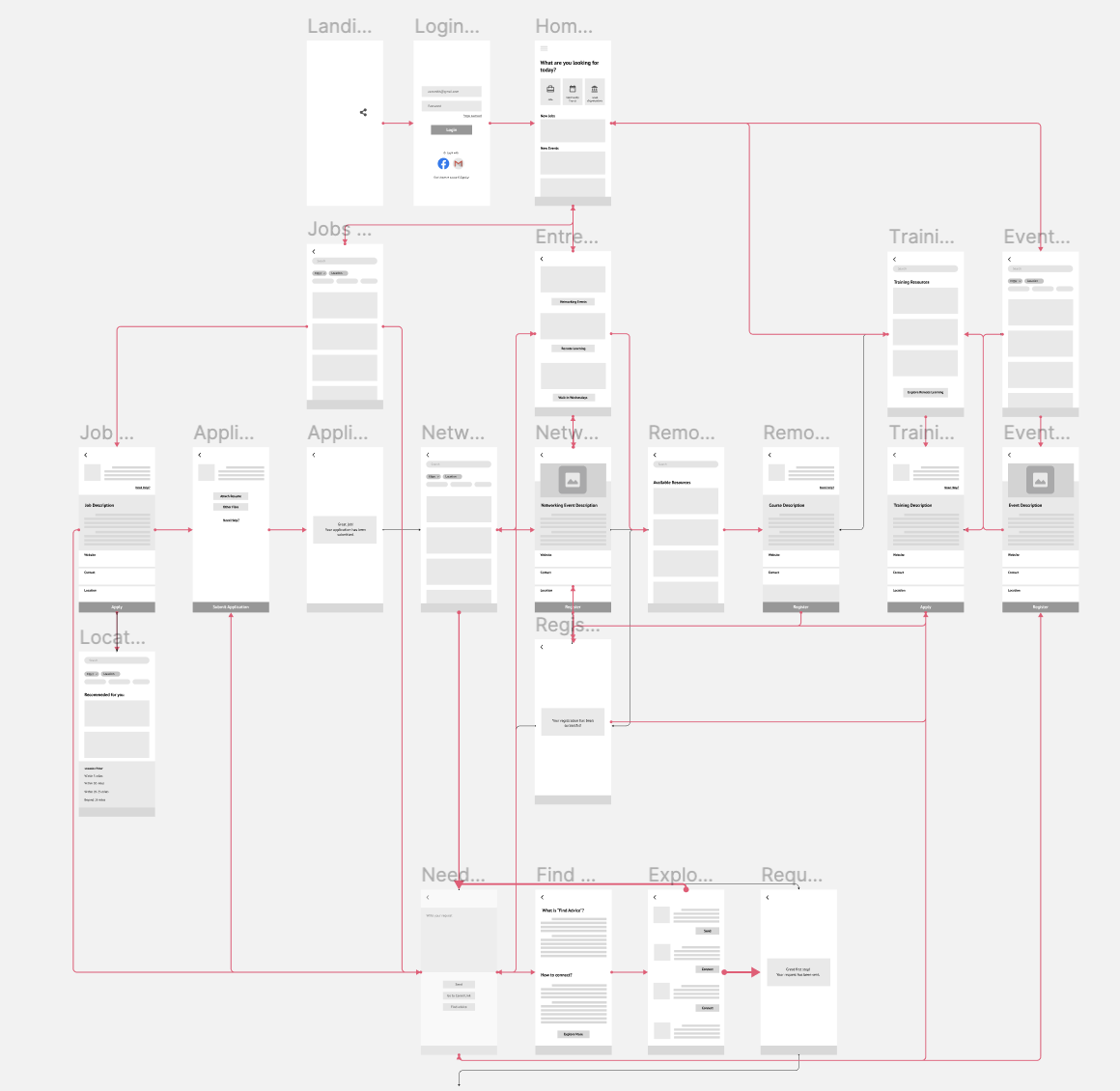
Low Fidelity
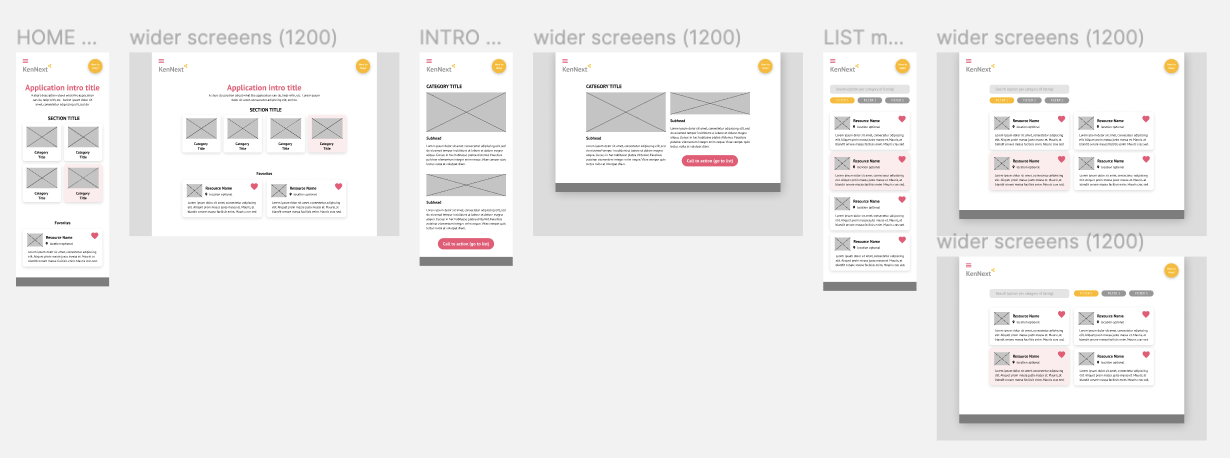
High Fidelity
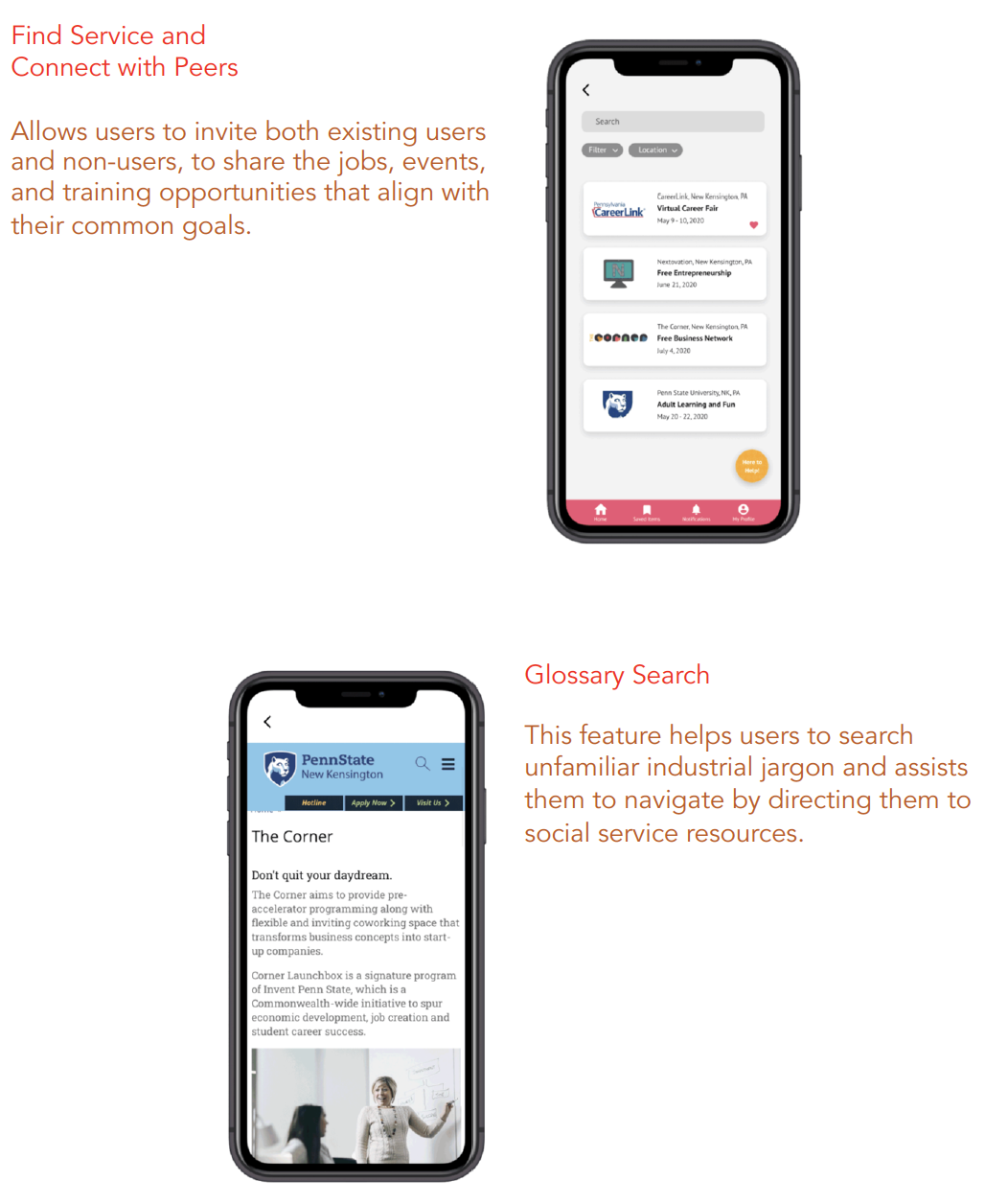

7. Reflection
Consideration
As the web app stores personal data, we bear the responsibility to protect user data and ensure its ethical use. This concern was particularly emphasized by social benefit organizations, highlighting the crucial role of trust-building between supporting organizations and key stakeholders.
Possibilities
As the population of single parents is increasing without suitable education tools, KenNext is a great solution to fill this market gap. The product can also be expanded to other persona groups, such as chronic homeless individuals, addicts, and homebound parents.
Challenges & Takeaways
I wish we could enhance the mentorship function, but due to trust issues within the community, we have decided to wait until they trust this new platform.

